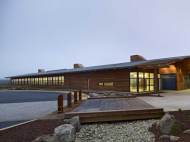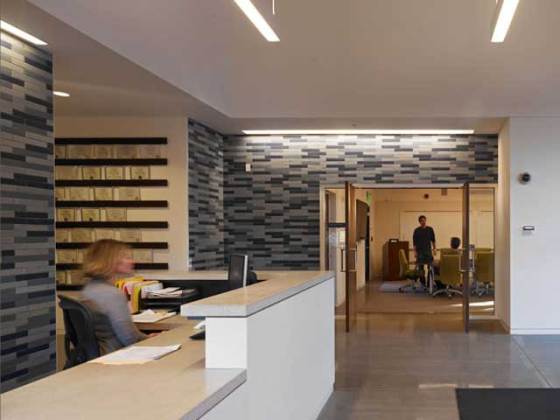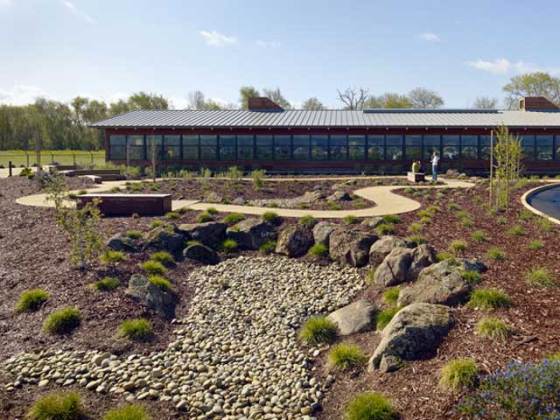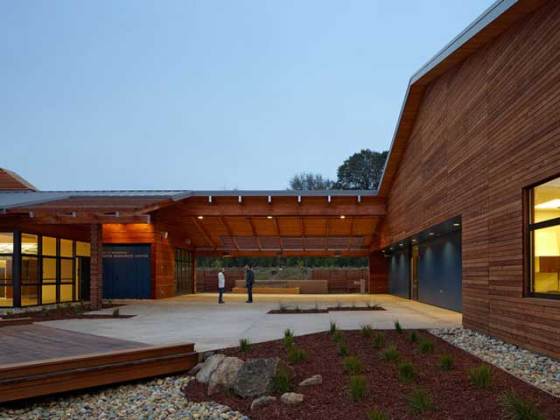Green architecture – Watsonville Water Operations Center
 The new Watsonville Area Water Operations Center supports the larger Water Recycling Project, a joint effort of the City of Watsonville and the Pajaro Valley Water Management Agency to provide recycled water to farmers throughout the coastal areas of South Santa Cruz and North Monterey counties. Aside lessening the groundwater consumption, the Water Operations Center significantly reduces wastewater discharges into the Monterey Bay National Marine Sanctuary.
The new Watsonville Area Water Operations Center supports the larger Water Recycling Project, a joint effort of the City of Watsonville and the Pajaro Valley Water Management Agency to provide recycled water to farmers throughout the coastal areas of South Santa Cruz and North Monterey counties. Aside lessening the groundwater consumption, the Water Operations Center significantly reduces wastewater discharges into the Monterey Bay National Marine Sanctuary.
Designed by WRNS Studio, the Water Resources Center is a functional, educational, and visual extension of the water recycling plant it supports. The new 16,000 square feet (almost 1,500 square meters) building consolidates three different city and county water departments into a workspace that allows for thoughtful and continuous collaboration on issues of water management, conservation, and quality in the Pajaro Valley. The facility includes administrative offices, a water quality lab, educational space and a design that puts the story of water in California on display.
California redwood owned by the City and slated for fire hazard clearance has custom milled eight miles from the project site and used for the building siding. Te wood, better suited than alternatives such as plaster or steel to withstand coastal area seawater, will develop a brown-grey patina which will serve to merge the facility with its topography
The focus on water as a finite, invaluable resource drove every aspect of design, from material selection to site development. Sustainable measures throughout the project design work in harmony with this idea, leveraging all potential opportunities for free cooling and natural ventilation. The HVAC system delivers thermal comfort and ventilation separately while heating is provided only when required, avoiding the energy penalty of a conventional forced air system, and the ventilation system includes a nighttime purge capability, reducing energy consumption due to cooling.
Radiant tubes in the floor use reclaimed water to provide heating and cooling for occupied spaces, and the plumbing design reduces water use with low-flow plumbing fixtures, dual-flush toilets that use reclaimed water for flushing, and solar-powered faucets.
In order to display water as a seasonal resource connected to the local agricultural growing season, water is supplied to a tiled water feature only when recycled water is available to the site. In addition, rainwater flows from eaves and rain chains into swales, and after that it is carried to retention basins to be treated prior to infiltrating the groundwater system.
Native and drought-tolerant plantings, which require less than 70% of typical water usage, are watered only when recycled water is available. These water conservation strategies helped reduce potable water consumption by 50 percent, helped achieve energy efficiency targets that exceed ASHRAE 90.1 standards by 76 percent and reduced the for energy intensive water transport, thus lowering the building’s overall carbon footprint.












More and more green architecture. It is appealing.
Dr.A.Jagadeesh Nellore(AP),India
That’s great.
I like the way you do things around.
You did a good job.
Keep it up.